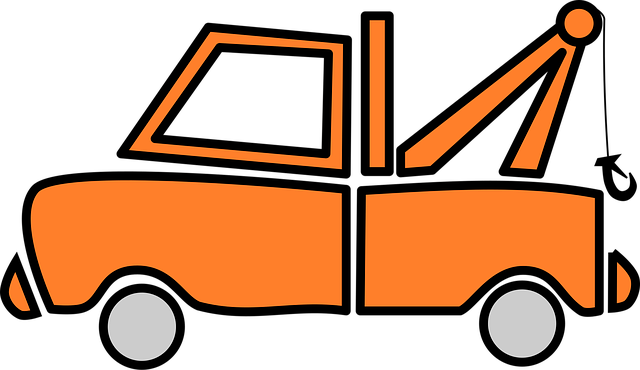Looking to register your car in California? This comprehensive guide walks you through the process step-by-step. From understanding key requirements and gathering essential documents, to performing a crucial VIN verification, and choosing the right registration method – we’ve got you covered. Learn how to submit your application and pay fees with ease. Master the art of CA vehicle registration today!
- Understand California Vehicle Registration Requirements
- Gather Necessary Documents for Car Registration
- Perform VIN Verification: Steps and Importance
- Choose an Appropriate Registration Method in CA
- Submit Application & Pay Fees for Car Registration
Understand California Vehicle Registration Requirements

Before diving into the registration process, it’s crucial to understand California’s vehicle registration requirements. This includes ensuring your vehicle meets all safety and environmental standards set by the state. One key aspect is the Vehicle Identification Number (VIN) verification, which serves as a unique code for your car, facilitating accurate record-keeping and ensuring only legitimate vehicles are on the road.
In California, you’ll typically need to complete a VIN inspection, often conducted through a mobile vin inspection or at a designated center. This process verifies the vehicle’s authenticity and historical data, such as its mileage and previous ownership. Proper documentation, including proof of insurance and identification, is essential to streamline the registration process smoothly.
Gather Necessary Documents for Car Registration

Before you begin the car registration process in California, ensure you have all the required documents ready. This typically includes your vehicle’s registration certificate from the previous state, a valid driver’s license, proof of insurance, and a completed California Vehicle Registration Application form. The most crucial document is the Vehicle Identification Number (VIN) verification report. You can obtain this through various methods, such as conducting a mobile vin inspection or visiting an authorized service center for a vin inspection. This step is essential to confirm your vehicle’s identity and its compliance with California’s regulations.
Additionally, you might need to provide evidence of ownership, especially if the car is used or purchased from a dealership. Some documents, like a title transfer or a bill of sale, can facilitate this process. Remember, having accurate and up-to-date paperwork will make your car registration smoother and faster.
Perform VIN Verification: Steps and Importance

Performing a Vehicle Identification Number (VIN) verification is a crucial step when registering your car in California. This process ensures that the vehicle you’re about to register is genuine, has not been reported stolen, and meets all necessary safety standards. It’s easy to do, especially with the help of modern tools like a mobile VIN verifier or through a vin inspection service.
Start by obtaining the 17-digit VIN from your car’s registration documents or check under the hood or in the driver’s door frame. Then, use one of these methods: a reputable online VIN checker tool, a mobile VIN verification app, or contact a professional inspection service. These services will cross-reference the VIN with comprehensive databases to provide you with detailed information about the vehicle’s history, including its previous owners, maintenance records, and any reported issues. This step is vital for ensuring that you’re making an informed decision when registering your car in California.
Choose an Appropriate Registration Method in CA

In California, registering a car involves several steps, and one crucial aspect is selecting the most suitable registration method for your needs. The state offers both traditional in-person visits to the Department of Motor Vehicles (DMV) and convenient online options, as well as mobile services like mobile vin inspection or mobile vin verifier. These alternatives allow you to initiate the registration process from the comfort of your home or office through a mobile vin verification service.
Choosing between these methods depends on your preference and circumstances. If you prefer a quick and hassle-free experience, opting for a mobile service that provides vin verification could be ideal. Alternatively, if you have the time and want to ensure all paperwork is in order, visiting the DMV or completing the process online may offer more control over the registration details.
Submit Application & Pay Fees for Car Registration

After gathering all your necessary documents, it’s time to submit your application and fees for car registration. This step is crucial in ensuring a seamless and legal process. You’ll need to complete the Application for Title and Registration (Form MV-105) form, available online or at any California Department of Motor Vehicles (DMV) office. Fill it out accurately, providing all required information, including your personal details and vehicle specifications. Once submitted, you’ll be required to pay various fees, which vary based on the type of vehicle and other factors. These fees cover the registration, license plate issuance, and title transfer processes.
To streamline this process, consider opting for a mobile vin inspection or vin inspection service, which allows for on-site verification of your vehicle’s VIN (Vehicle Identification Number). This can save you time and effort compared to traditional methods. Alternatively, the DMV offers various payment options, including online, by mail, or in-person, ensuring convenience for all applicants. Remember that prompt submission and accurate documentation are key to avoiding delays in receiving your official car registration.
Registering a car in California involves understanding state requirements, gathering essential documents, and completing a VIN verification process. After ensuring all necessary steps are taken, you can choose between traditional or online registration methods. By following these guidelines, including the crucial step of VIN verification, you’ll successfully navigate the process, making your vehicle legal to drive on California roads.
